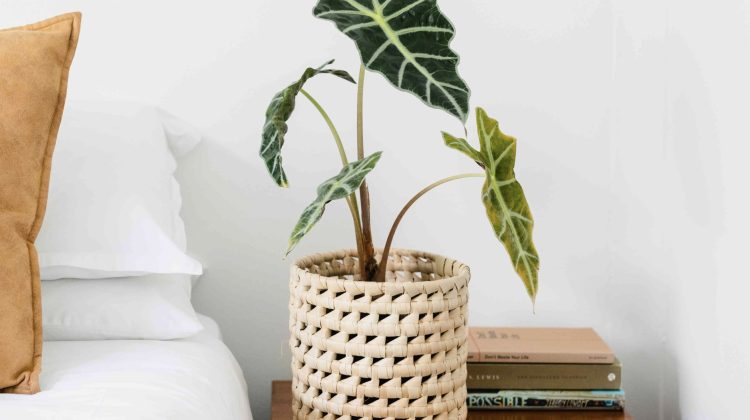
Alocasia Polly is a popular indoor plant known for its striking foliage and easy care. This plant is native to Southeast Asia and belongs to the Araceae family.
The Alocasia Polly is also known as African Mask Plant or Elephant Ear Plant, due to the shape and size of its leaves.
If you’re looking for a plant that adds a touch of tropical flair to your home, the Alocasia Polly is an excellent choice. With proper care, this plant can thrive for years and add a vibrant pop of green to any room.
However, caring for the Alocasia Polly can be a bit tricky, as it requires specific conditions to grow and thrive.
In this article, we will cover all the essential information you need to know to care for your Alocasia Polly.
We will discuss the ideal growing conditions, watering and fertilizing needs, and common problems that can affect this plant. Whether you’re a seasoned plant parent or a beginner, this guide will help you keep your Alocasia Polly healthy and beautiful.
In this article, we'll cover
1. Planting and Potting Alocasia Polly
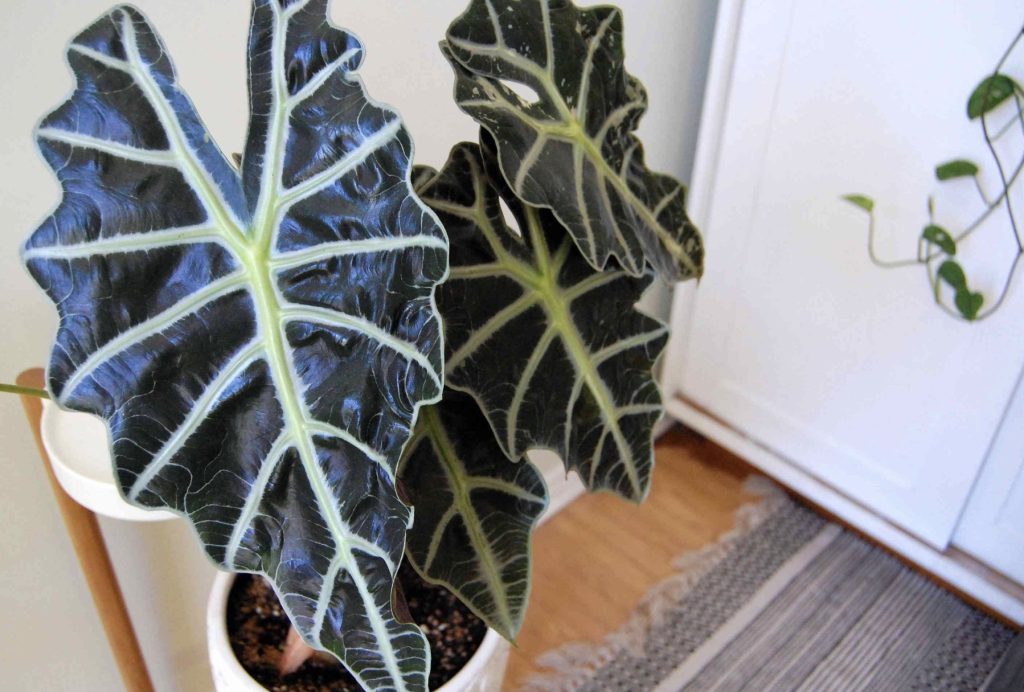
When planting and potting Alocasia Polly, it is important to use well-draining soil to prevent root rot. Alocasia Polly prefers moist soil, but it should not be waterlogged.
A good potting mix can be made with one part potting soil, one part peat moss, and one part perlite.
It is also important to choose a pot with drainage holes to ensure excess water can escape. This will prevent the soil from becoming too moist and causing root rot.
Alocasia Polly prefers a pot that is slightly larger than its root ball, as this allows room for growth.
When planting, gently remove the plant from its current pot and loosen any tangled roots. Place the plant in the new pot, making sure the top of the root ball is level with the soil surface.
Fill the pot with soil, gently pressing it down to remove any air pockets.
After planting, water the plant thoroughly and place it in a bright, indirect light. Alocasia Polly prefers temperatures between 64-79°F (18-26°C) and should be kept away from cold drafts.
2. Watering and Fertilizing Alocasia Polly
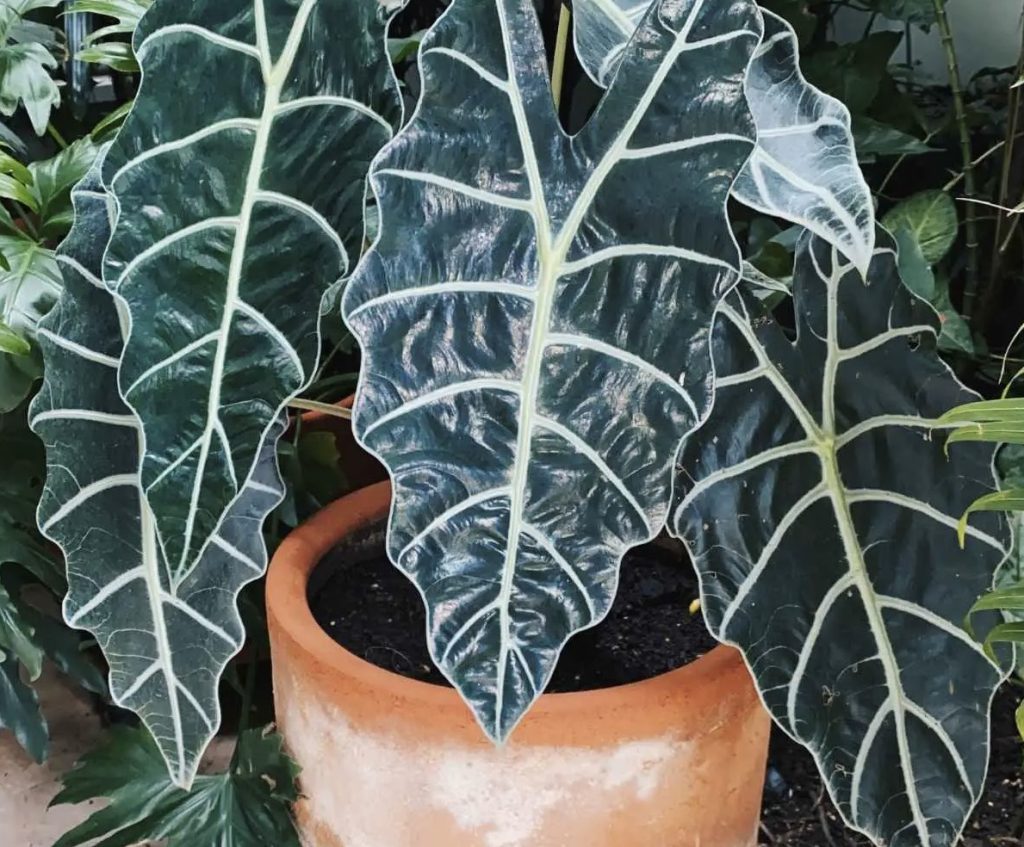
How often to water Alocasia Polly
Watering is an essential part of Alocasia Polly care. The soil should stay consistently moist, but not waterlogged. Water the plant once a week and keep the top 2 inches of soil slightly moist.
In winter, when the plant is not actively growing, water just when the top inch of soil is dry. Be careful not to overwater the plant as it can lead to root rot.
It’s important to note that the Alocasia Polly is sensitive to the quality of the water it receives. It’s best to use distilled water or rainwater as tap water can contain chemicals that may harm the plant.
Best type of fertilizer for Alocasia Polly
Fertilizing is also crucial for the growth of Alocasia Polly. It’s recommended to fertilize the plant once a month in spring and summer using a liquid fertilizer at half-strength.
Avoid fertilizing during the winter months when the plant is dormant.
The best type of fertilizer for Alocasia Polly is a balanced fertilizer with equal amounts of nitrogen, phosphorus, and potassium. You can also use a fertilizer specifically designed for houseplants.
It’s important not to over-fertilize the plant as it can lead to salt buildup in the soil, which can harm the roots.
Additionally, it’s crucial to follow the instructions on the fertilizer package carefully. Over-fertilizing can cause the plant to grow too quickly, which can lead to weak stems and leaves that are more susceptible to disease and pests.
3. Pruning and Propagating Alocasia Polly
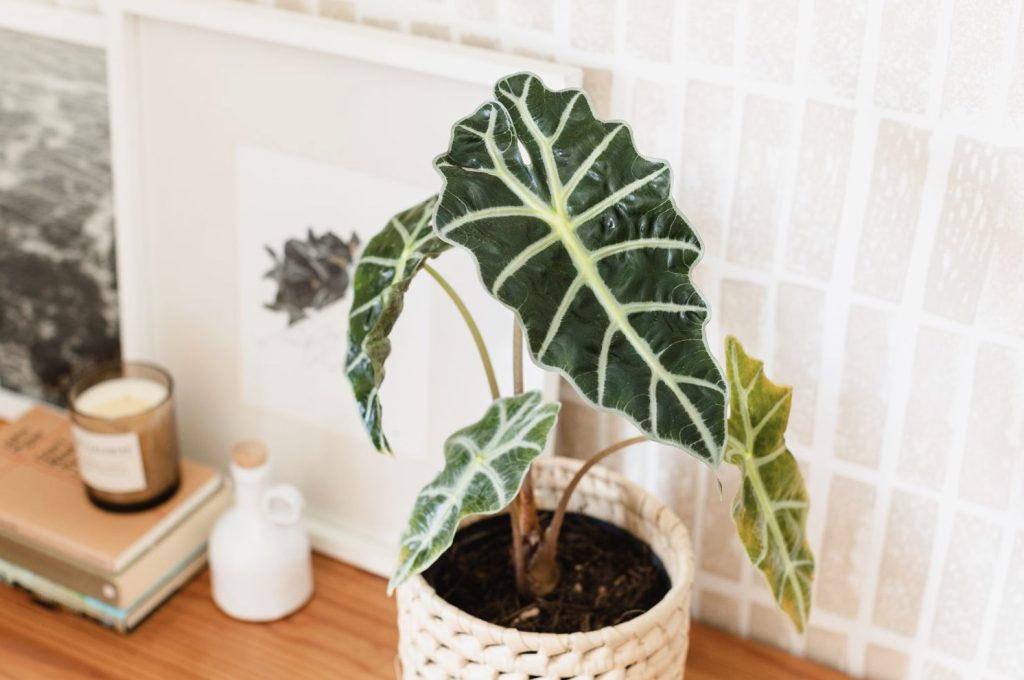
When and how to prune Alocasia Polly
Alocasia Polly is a slow-growing plant, especially when kept indoors, and pruning is usually not necessary to shape the plant or control its growth.
However, you may need to cut back dead or damaged leaves in spring or summer when the plant has the energy to put out new growth. Use sterilized pruners or shears and cut back leaves at the base of the stem.
Pruning also helps to make room for more leaves and stems to develop and makes the foliage luscious. If the plant becomes overgrown, pruning is necessary.
How to propagate Alocasia Polly
Alocasia Polly can be propagated by dividing the rhizomes, or root system, into several pieces. Each piece should have at least one eye or a growing point. Here’s how to propagate Alocasia Polly:
- Prepare the potting mix by making sure it is moist and nutrient-rich. This helps prevent the roots from drying out.
- Remove the plant from its pot and shake off any excess soil.
- Separate the rhizomes by gently pulling them apart or cutting them with a clean, sharp knife.
- Plant each rhizome in a separate pot with fresh potting mix and water thoroughly.
- Place the pots in a warm, bright location with high humidity and keep the soil moist but not waterlogged.
Propagation is best done in spring or summer when the plant is actively growing.
4. Common Alocasia Polly Problems and Solutions
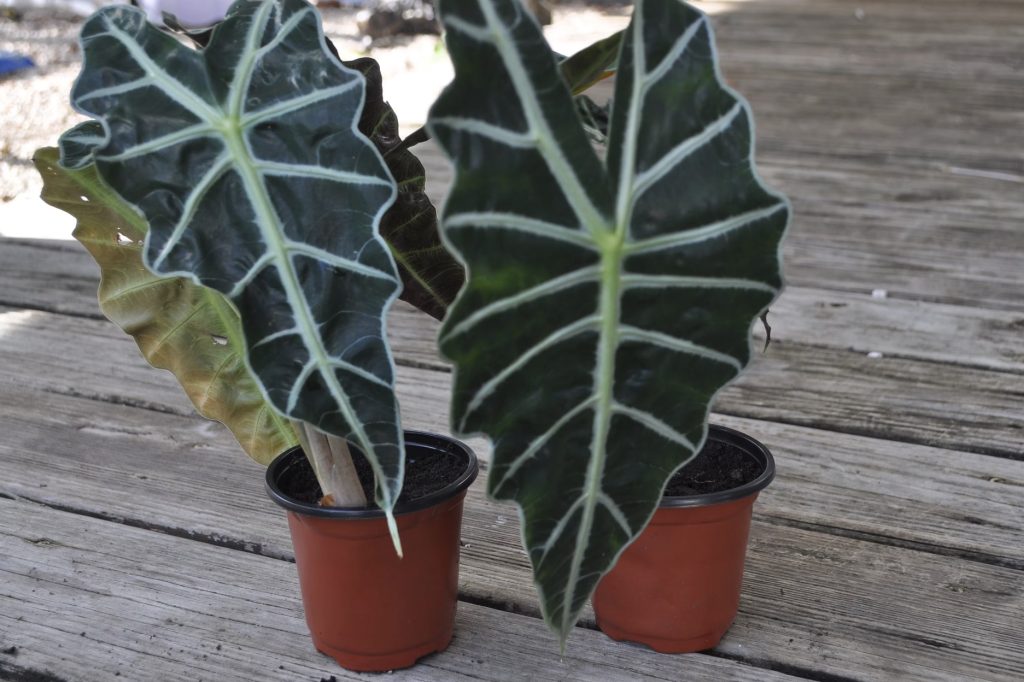
Despite being a beautiful and popular houseplant, Alocasia Polly can suffer from a few common problems. Here are some of the most frequent issues and solutions to help you keep your plant healthy:
Yellowing Leaves
If your Alocasia Polly’s leaves are turning yellow, it could be due to overwatering or underwatering. Check the soil moisture level and adjust your watering accordingly.
Too much direct sunlight can also cause yellowing, so move your plant to a shadier spot if needed.
Brown Tips
Brown tips on the leaves can indicate low humidity levels or too much fertilizer. Increase the humidity around your plant by misting it regularly or placing a tray of water nearby.
Reduce the amount of fertilizer or frequency of application if you notice brown tips.
Pests
Alocasia Polly can attract pests such as spider mites and mealybugs. If you notice any signs of infestation, isolate your plant and treat it with an insecticidal soap or neem oil.
Regularly inspect your plant to catch any pests early on.
Root Rot
Overwatering or poorly draining soil can lead to root rot in Alocasia Polly. If you notice mushy or discolored roots, remove the affected parts and repot your plant in fresh soil with better drainage.
Allow the soil to dry out slightly between waterings to prevent future issues.
5. Repotting Alocasia Polly
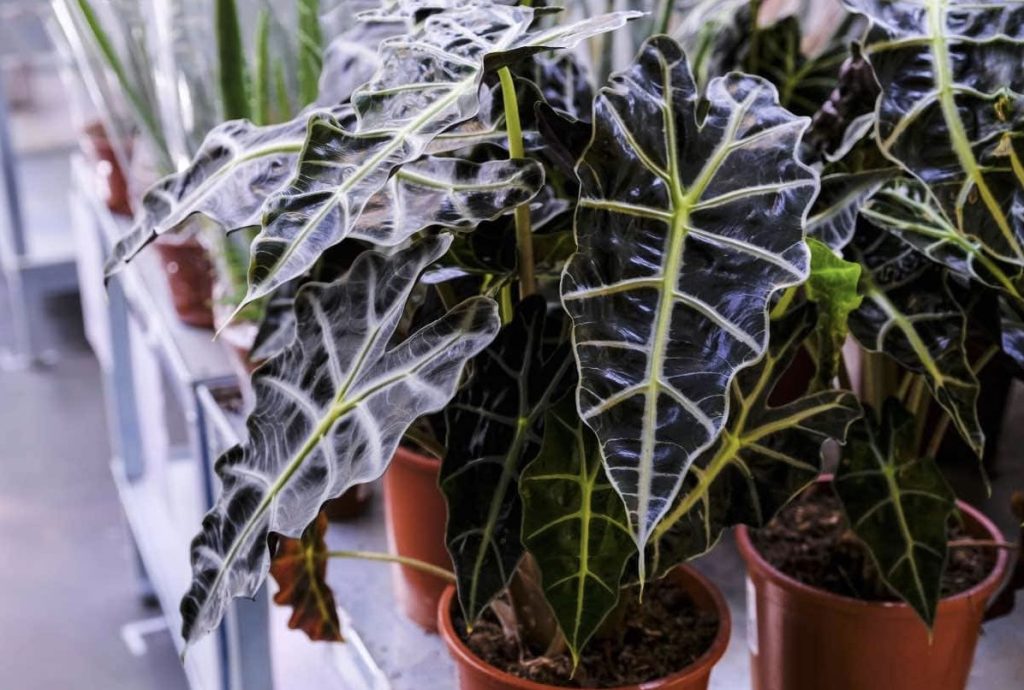
Alocasia Polly is a tropical plant that loves moisture and high humidity. It’s necessary to repot your plant every year or two to keep it healthy and thriving.
Repotting allows the plant to have more room for growth and to refresh the soil. Here are some steps to follow when repotting your Alocasia Polly:
- Step 1: Preparation – When repotting, use a pot that is only slightly larger than the original pot. This will help to keep the plant from becoming root-bound. Choose a pot with good drainage and fill the bottom with a layer of gravel or small stones to improve drainage.
- Step 2: Remove the plant from its current pot – Gently remove the plant from its current pot. Be careful not to damage the roots or the plant. If the plant is root-bound, carefully loosen the roots with your fingers or a tool.
- Step 3: Clean the roots – Remove any dead or damaged roots and gently wash the remaining roots with water. This will help to remove any old soil or debris and encourage new growth.
- Step 4: Add fresh soil – Fill the new pot with fresh, well-draining soil. You can use a mix of potting soil, perlite, and peat moss. Make sure to leave enough space at the top for the plant.
- Step 5: Repot the plant – Place the plant in the new pot and fill in the sides with soil. Gently press down on the soil to remove any air pockets. Water the plant thoroughly and let it drain.
Repotting your Alocasia Polly is a simple process that can help to keep your plant healthy and thriving. Make sure to follow these steps carefully and avoid overwatering or over-fertilizing your plant.
With the right care, your Alocasia Polly can grow into a beautiful and vibrant tropical plant.
Conclusion
The Alocasia Polly is a beautiful houseplant that can add a tropical touch to any indoor space. With proper care, this plant can thrive and bring joy to its owner for years to come.
Here are some key takeaways to keep in mind when caring for your Alocasia Polly:
- Water your Alocasia Polly so that the soil stays consistently moist, but avoid overwatering to prevent root rot.
- Keep your plant in a warm spot with high humidity, ideally around 60% or above.
- Fertilize your Alocasia Polly once a month in spring and summer using a liquid fertilizer at half-strength.
- During the winter months, reduce watering and keep your plant in a warmer spot to help it through its dormant period.
- If your Alocasia Polly needs a trim, use clean, sharp plant snips to tidy it up.
By following these simple tips, you can ensure that your Alocasia Polly stays healthy and happy.
Remember to keep an eye on your plant and adjust its care as needed to help it thrive. With a little bit of effort, your Alocasia Polly can be a stunning addition to your home or office.
Leave a Reply